Iran has the largest and most diverse missile arsenal in the Middle East. It has thousands of cruise and ballistic missiles with ranges from 200 km to 3,000 km (123 miles to 1,864 miles) and varying degrees of accuracy. Iran’s missile program, which dates back to the monarchy and briefly included collaboration with Israel, has been an increasingly important military staple since the 1979 revolution, as the Islamic Republic’s warplanes became obsolete. Since the late 1980s, Iran has developed an increasingly sophisticated arsenal that is critical to its offensive capabilities, as well as its strategy of defensive deterrence.
The Islamic Republic initially relied on foreign sources, including North Korea, for missile technology. But since the early 2010s, its indigenous missiles have increased in both range and accuracy. They have proven precise enough to damage stationary targets hundreds of miles from Iran's borders. By 2021, Iran had achieved "overmatch" -- the ability to overwhelm the defenses of its adversaries, Israel, with massive barrages of missiles, according to General Kenneth McKenzie, then head of U.S. Central Command. Iran has also improved the maneuverability of its missiles to make them harder to intercept. Tehran is "emphasizing improving the accuracy, lethality, and reliability of its missiles," the 2024 U.S. intelligence assessment reported.
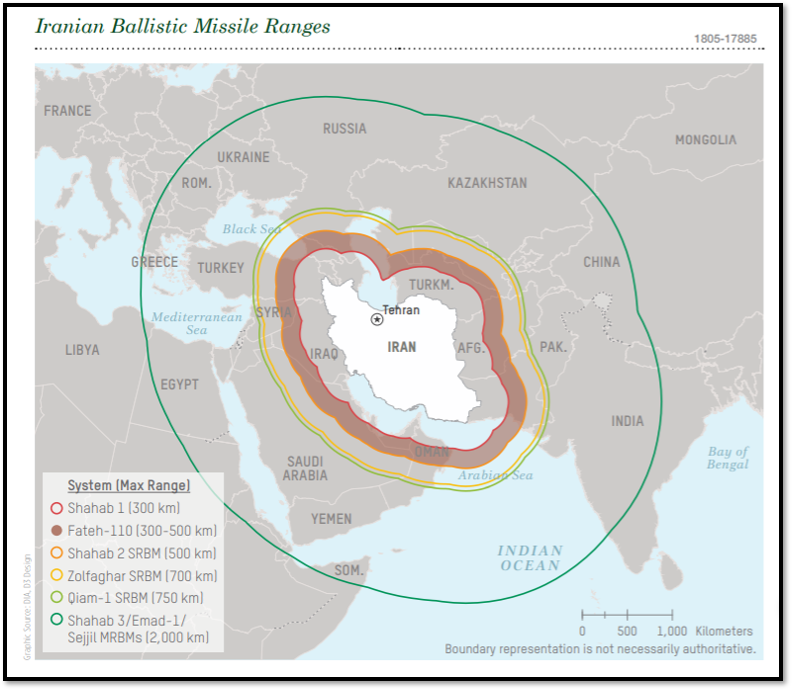
Related Material:
- Iran's Missiles: Evolution and Arsenal
- Iran's Missiles: Military Strategy
- Iran's Missiles: Timeline of Attacks
- Iran's Missiles: Transfer to Proxies
Iran's Missile Inventory
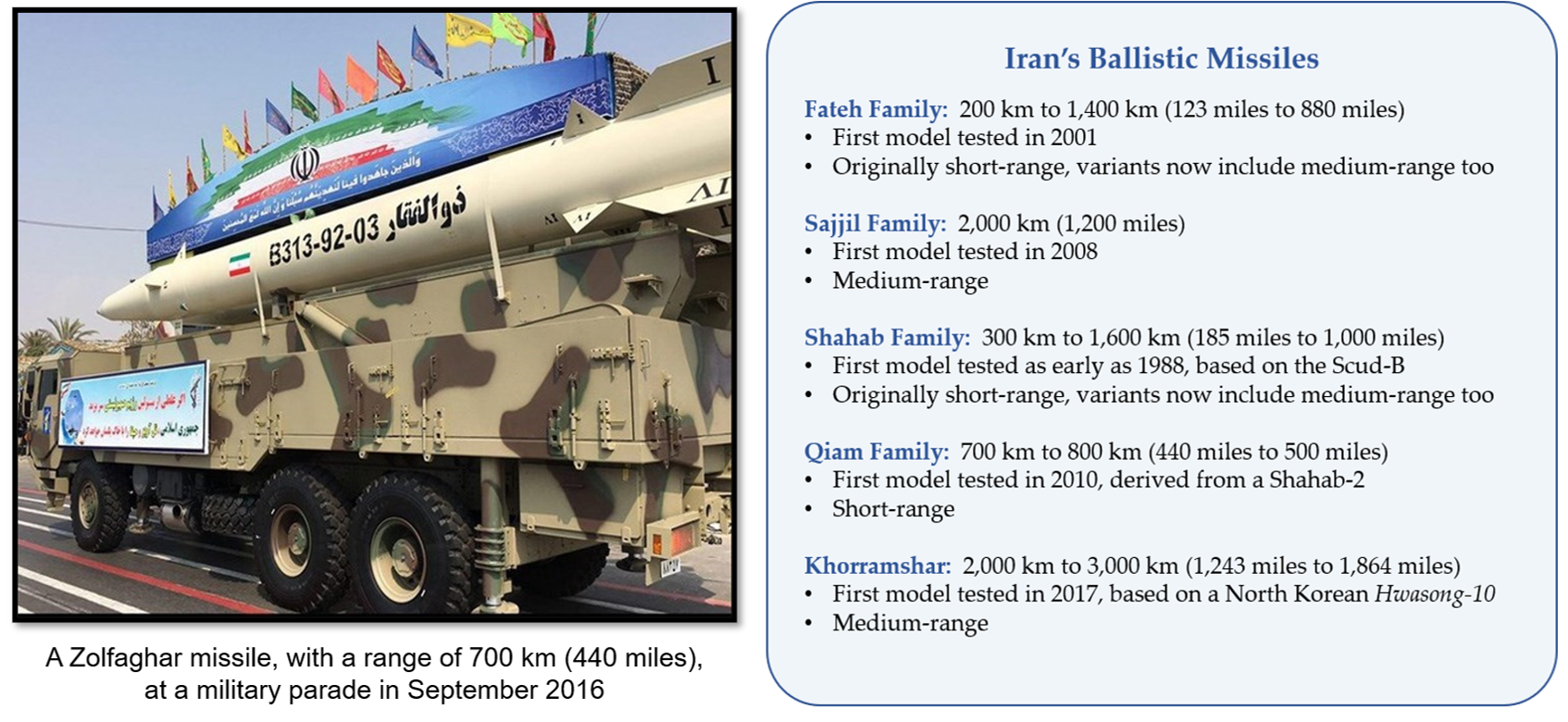
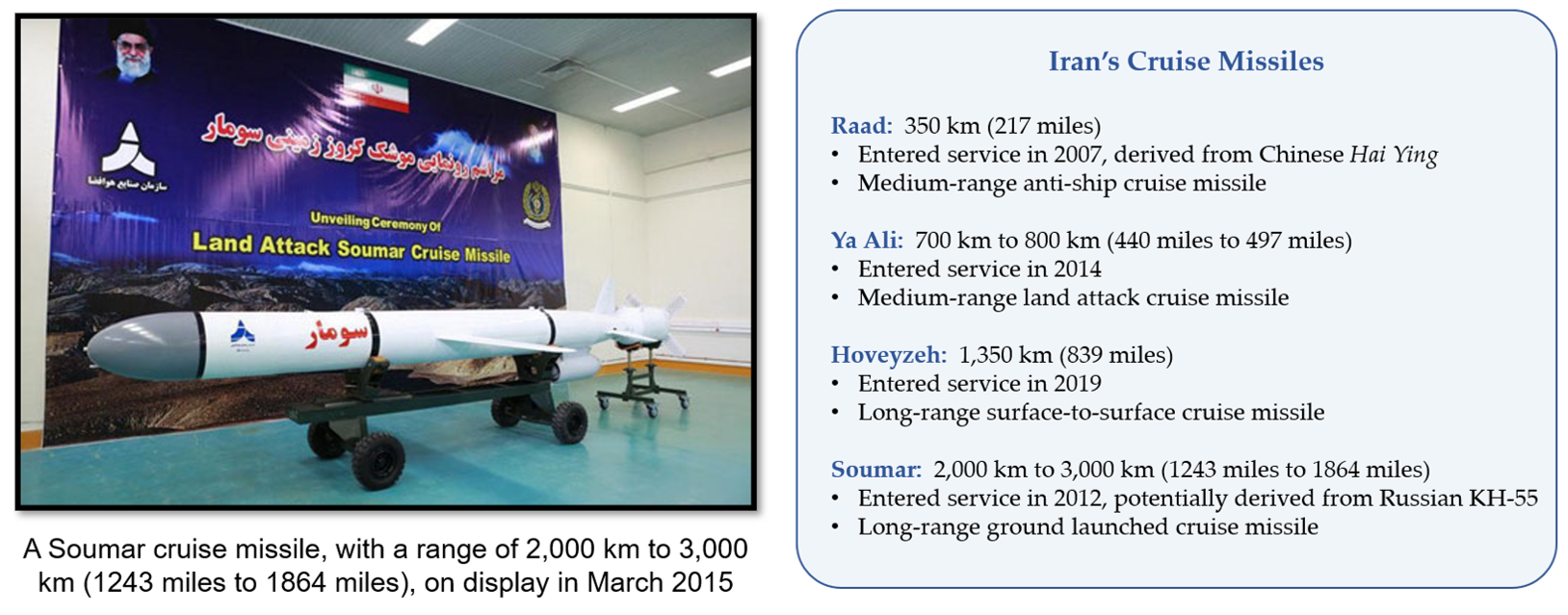
Map of Iranian Missile Attacks 2017-2024
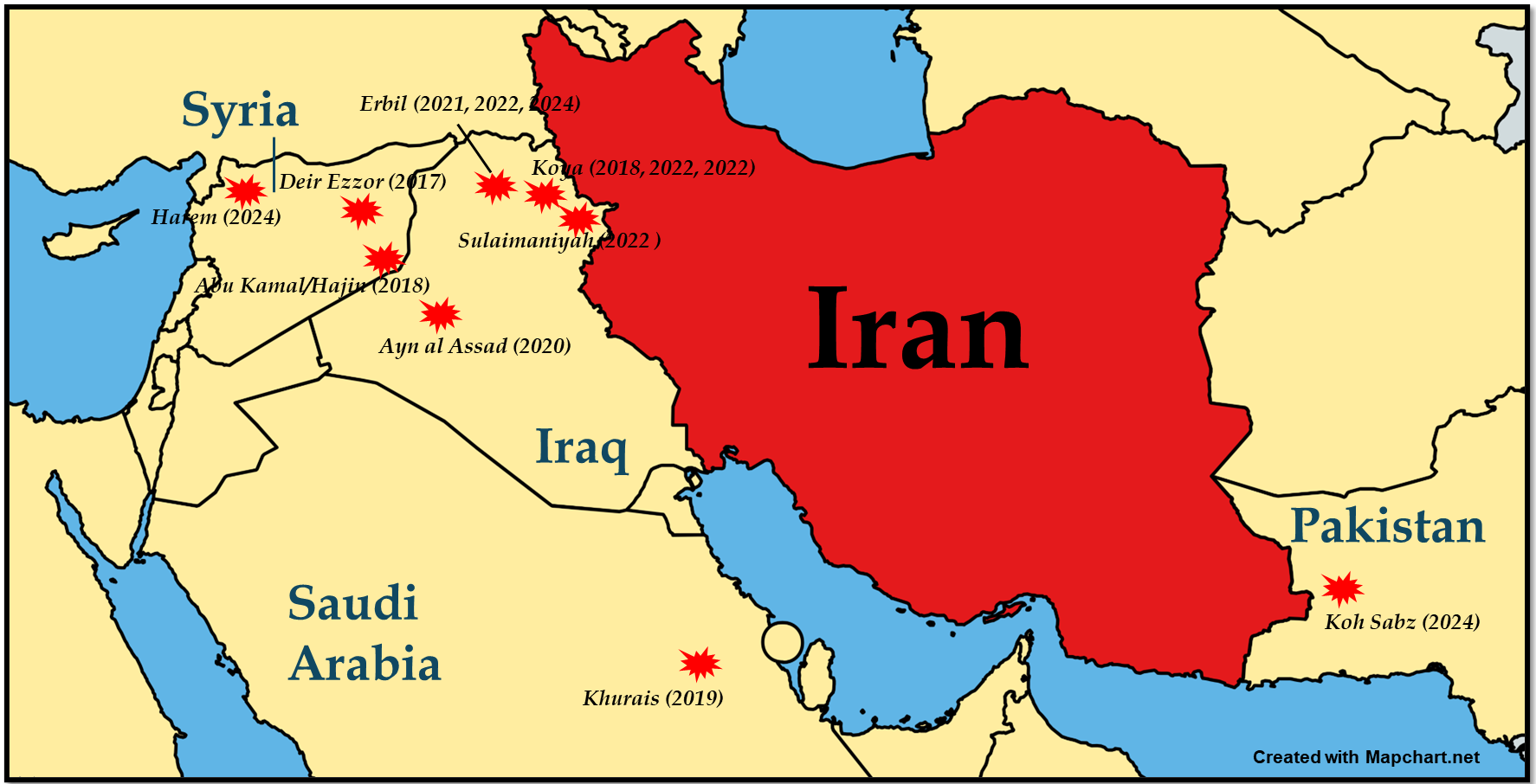
- During the 1980-1988 war with Iraq, President Saddam Hussein launched missiles deep into Iran during the so-called “war of the cities.” Iran countered with Scud B missiles.
- Between 1994 and 2001, Iran fired Shahab-1, its own variant of the Scud B, at bases in Iraq used by the Mujahedin-e Khalq, an opposition group linked to underground operations across the border.
- Between 2017 and early 2024, Iran demonstrated new missile capabilities. In 2017 and 2018, it fired a dozen short-range ballistic missiles on ISIS targets in eastern Syria; some traveled more than 370 miles, crossing over Iraq. In 2018, it launched seven short-range ballistic missiles at Kurdish separatists based in northern Iraq. In 2019, Iran allegedly fired seven cruise missiles a Saudi Arabian oil facility. And in 2020, Iran fired more than a dozen short-range ballistic missiles at two Iraqi military bases housing U.S. troops. In early 2024, Iran demonstrated the range of its new generation of missiles when it attacked Islamic State targets in northwest Syria some 745 miles away.
Map of Iran’s Missile Transfers to Proxies
Since the early 2000s, Iran has supplied cruise and ballistic missiles to its proxies in at least three countries—Iraq, Lebanon and Yemen. Tehran’s transfer of technology and missiles—which range from 120 km to 1,950 km or 77 miles to 1,210 miles—allows its proxies to hit targets at further range and with greater precision than either artillery or unguided rockets.
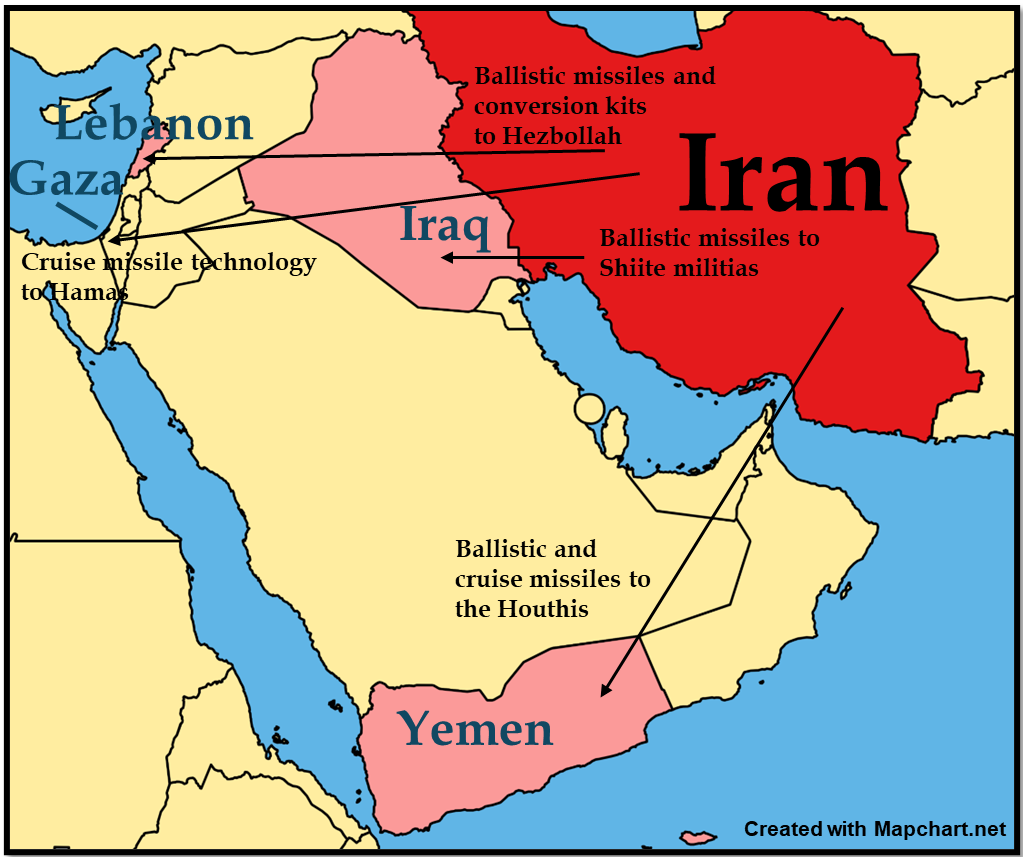
- Lebanon: Iran has transferred the largest number of missiles—estimated to total 14,000, with ranges of 125 km to 300 km, or 77 miles to 185 miles—to Hezbollah, the largest militia and a political powerbroker in Lebanon. In the early 2000s, Hezbollah was the first recipient of Iranian missiles. Since 2016, Iran has reportedly provided conversion kits to upgrade Hezbollah’s arsenal from short-range rockets to precision-guided missiles capable of hitting deep into Israel. Hezbollah has fired thousands of rockets into Israel, but it had not yet unleashed ballistic missiles across the border as of early 2024.
- Yemen: Since at least 2015, Tehran has reportedly transferred short- and medium-range ballistic and cruise missiles—with ranges up to 1,950 km, or 1,210 miles—to Houthi rebels. The Zaydi Shiite militia has fought the Saudi-backed central government off-and-on since 2004. After Saudi Arabia and the United Arab Emirates launched an air campaign in 2015, the Houthis launched dozens of missiles against major Saudi and Emirati cities.
- Iraq: Since 2018, Iran has reportedly supplied short-range ballistic missiles – with ranges up to 700 km – to Shiite militias in Iraq, including Kataib Hezbollah and Saraya al Jihad. The missiles could hit U.S. forces based in Iraq and even reach Israel, if launched from the western desert. In 2024, Iraqi police found Quds-2 cruise missiles in Babil. The weapons, copies of Iran’s Soumar cruise missiles, which indicated technology or weapons transfers by Iran to Iraqi militias.
- Gaza: In January 2024, the Israeli military found a rocket engine and warhead of a cruise missile at an underground weapons manufacturing plant in Gaza City. The components proved that Hamas “learned under Iranian guidance how to operate and build precision components and strategic weapons,” the Israel Defense Forces said. Hamas had not previously displayed or used guided missiles.
Missile Types: Short-Range Missiles (less than 1,000 km or 621 miles)
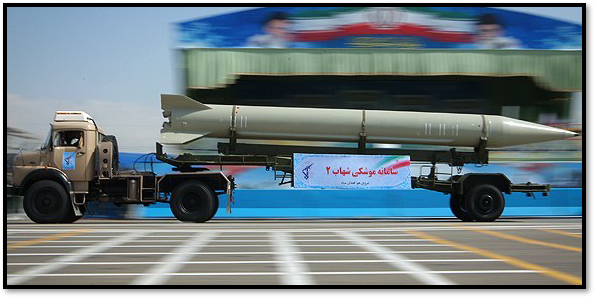
- The Shahab-2 has a range of 500 km (310 miles).
- It has been part of Iran's arsenal since 1998.
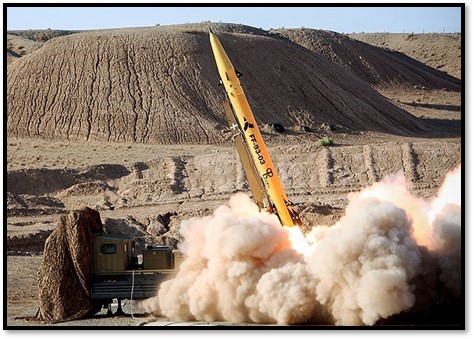
- The Fateh-313 has a range of 500 km (310 miles).
- It has been part of Iran's arsenal since 2015.
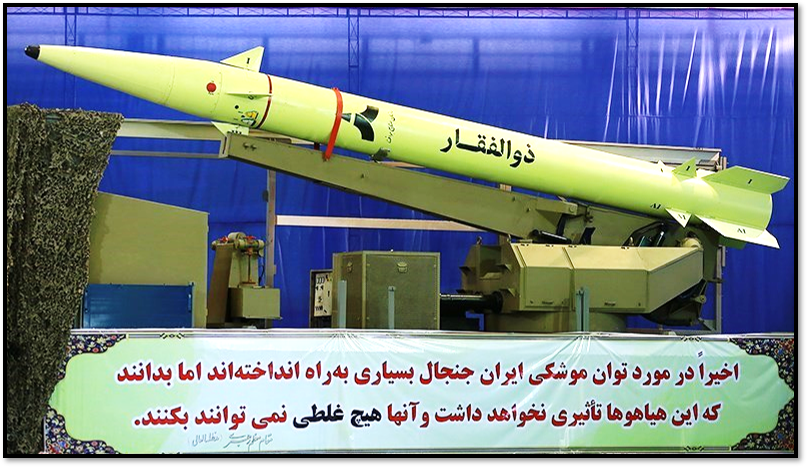
- The Zolfaghar has a range of 700 km (440 miles).
- It has been part of Iran's arsenal since 2017.
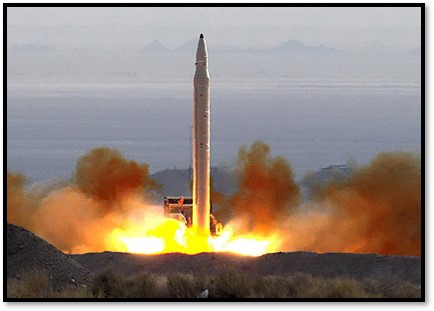
- The Qiam-1 has a range of 700 km to 800 km (440 miles to 500 miles).
- It has been part of Iran's arsenal since 2010.
Missile Types: Medium-Range Missiles (1,000 km to 2,000 km or 1,242 miles to 1864 miles)
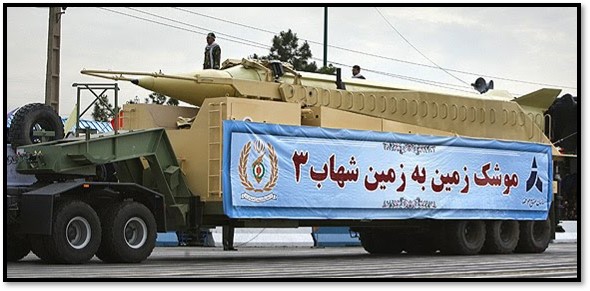
- The Shahab-3 has a range of 1,300 km (807 miles).
- It has been part of Iran's arsenal since 2003.
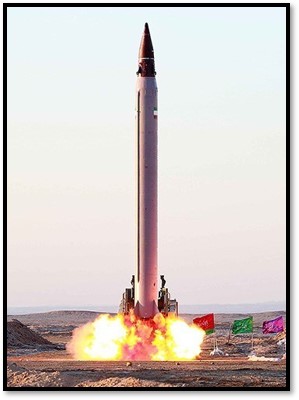
- The Emad has a range of 1,500 km (932 miles).
- It has been part of Iran's arsenal since 2015.

- The Ghadr has a range of 1,600 km (1,000 miles).
- It has been part of Iran's arsenal since 2004.
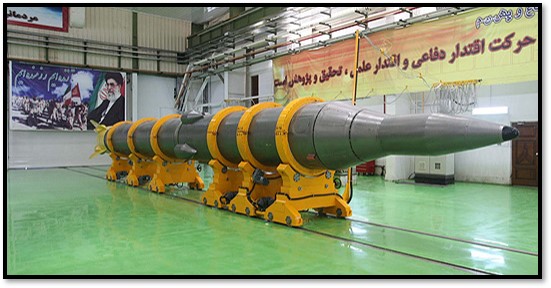
- The Sajjil has a range of 2,000 km (1,242 miles).
- It has been part of Iran's arsenal since 2008.
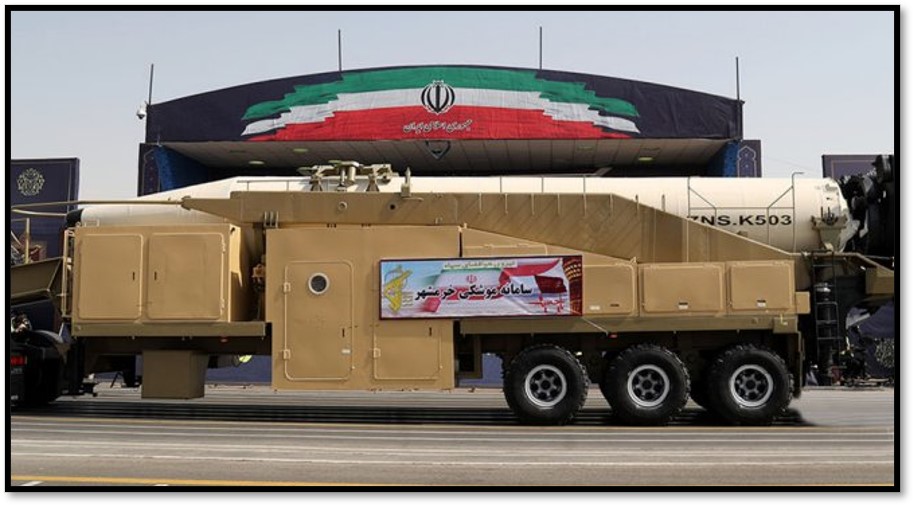
- The Khorramshar has a range of 2,000 km (1,242 miles).
- It has been part of Iran's arsenal since 2017.
